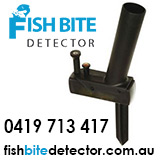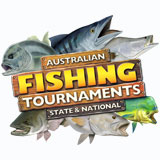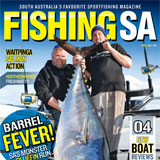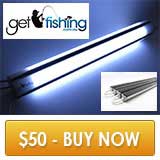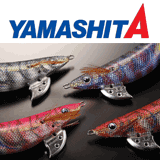Species ID
View AllSnapper
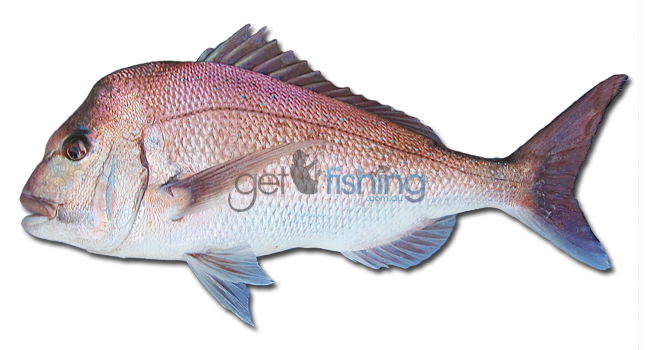
Snapper are one of the most sought after species targeted by recreational fishers in most states around the country. Large Snapper are a true trophy fish, prized for their hard fight, relative elusiveness, striking appearance and fantastic eating qualities. Despite the name, Snapper are not members of the true Snapper family, Lutjanidae. They are actually members of the Sea bream family, Sparidae, and are more closely related to Bream and Tarwhine than true Snapper. The upper half of the body including the fins is silvery pink to almost red in colour and grades into a light pink to silvery white along the lower half. The body is covered in small bright blue spots which fade in larger specimens and the bottom fins often display a blue tinge. Larger fish have steep sloping foreheads and develop prominent bony humps in a process known as ‘hyperostosis‘. Males can also display similar bumps on the snout. These bumps are thought to be used by males during breeding to nudge females and stimulate release of eggs.
Other Names
Pinky, Knobby, Big Red, Australasian Snapper, Old Man Snapper, Squire, Cockney Bream, Pink Snapper, Rugger, Nobby, Reddie, Red Bream
Common size
30-60cm
Related species
Black Bream (Acanthopagrus butcheri), Tarwhine (Rhabdosargus sarba), Yellowfin Bream (Acanthopagrus australis)
Lifespan
At least 40 years
Habitat
Snapper are a demersal (bottom-dwelling) fish but also spend time in higher in the water column. They prefer reef environments and areas of patchy reef and sand. Juveniles prefer shallower near shore habitats such as bays and estuaries. Adults have a wider habitat range and can be found between the shoreline out to depths of 200 to 300m.
Reproduction
Snapper are a slow-growing species that can live for 40 years or more. Size at maturity varies around the country but in areas such as Perth WA, females don’t mature until approximately 58cm and 5 to 6 years of age. Spawning season varies between locations. In warmer waters Snapper spawn between April-October, while in cooler waters they spawn between October to December. During these seasons, Snapper can form large spawning aggregations consisting of thousands of fish. Fertilisation occurs externally as males and females release eggs and sperm into the water.
Diet
Snapper feed on a wide range of organisms but are mostly carnivorous. They feed on crustaceans, molluscs, fish, worms, urchins, as well as jellyfish and algae.
Catch care
A rising trend amongst conscious anglers is to take a photo of larger Snapper and release them. However, they are great on the table so if you decide to take home a feed be sure to look after your fish properly by immediately bleeding and placing on ice, preferably in a salty ice slurry.
Filleting
See our ‘How to fillet Snapper‘ video.
Information courtesy of Department of Fisheries WA and DAFF QLD
Fast Facts photo: Paul Swart 12.8kg Snapper, Perth WA
When to target
First and last light give or take a few hours is the best time of day to target Snapper. In terms of moon phase it is believed that the lead up to the full moon is a good period for targeting Snapper.
Where to fish
Boat
Due to the diversity of depths and bottom types where Snapper can be caught it is worth paying attention to seasonal movements and latest fishing reports. When targeting Snapper on shallow inshore reefs look for patchy sand/reef or rubblier bottom structures around known Snapper grounds. Snapper will often be seen on your sounder as arches sitting up off the bottom and throughout the lower half of the water column.
When targeting Snapper on deeper reefs look for broken or rough ground, ledges or steep drop-offs. Once again watch your sounder for arches in the bottom third to a half of the water column.
How to fish
Shallow inshore
Targeting Snapper in shallow water on light line in my opinion is a more challenging and rewarding method than targeting Snapper on deeper reefs.
Once you have marked a spot you wish to fish drop the anchor up current/wind (whichever is strongest) from the mark. Once the anchor has held the first thing to do is work on getting a nice berley trail going to bring the fish to the boat. The aim of berleying is to increase your strike-rate and to keep the fish around for longer. Ideally you will have the berley flowing out off the back of the boat. Berley flowing up towards the anchor is not ideal and will limit your results. If this is the case try a different approach with your anchor setup.
Cast lightly weighted baits as far as you can into the berley trail, let off a few meters of line to allow the bait to slowly flutter towards the bottom. While threadline reals are my preferred real of choice when targeting Snapper, Baitrunner style real like the Shimano Baitrunner are ideal for baitfishing in this type of scenario and there are few better sounds to a Snapper fisherman’s ears than a screaming Baitrunner as it bellows off line in the direction of a rampaging Snapper. If using a Baitrunner ensure you set your drags prior to casting. In shallow water Snapper have been known to smash baits merely seconds after it hitting the water and the adjusting your drag mid fight is a recipe for disaster. When planning to set the rod in a rod holder, engage the Baitrunner function and wait for the fish to take off line, and then strike. When fighting Snapper in shallow water I’ve personally found that fishing a lighter drag can often result in less bust-offs. If using multiple rods spread the baits out and vary your cast distance.
When using soft plastics once again focus your casts in and around the berley trail and throw the odd cast to the sides into ‘dead water’. Vary your cast length and vary the depth of retrieve until you locate where the better fish are most plentiful. Vary the action and speed of retrieval until you find what is working best on the day. Also try different size, shape, and colour plastics to suit the conditions. In dirty water and overcast days use brighter colours such as your pinks, yellows and whites while in clearer water go for your browns, blacks and reds.
Deeper offshore
When targeting Snapper on deeper reefs systems, both fishing at anchor or drifting are worthwhile techniques. If drifting simply motor 50-60m away from the mark in the direction that you will be drifting from (the deeper the water and stronger the current the further you will need to go). Cut the engine, drop your baits over and once they have hit the bottom engage the reel. If you find you are going past the mark before your baits have reached the bottom try going further to increase your drift length. If you are losing bait to pickers before reaching the mark use larger/harder baits and decrease your drift length. Always use as small a sinker as possible to hold bottom throughout the drift. If your sounder shows arches up off the bottom in mid-water it may pay to mix it up and drift lighter weighted baits through the water column.
Fishing at anchor in deeper water requires a slightly different approach to fishing shallow water. Sinker size often needs to be increased to ensure baits reach the bottom. Choose a small bean or ball sinker that allows the bait to waft down to the bottom slowly. Again, the same baits are used as in shallow water. A berley trail is advantageous if the current is not too strong and if the current is going off the back of the boat or to the side where you are fishing. If the current is heading towards the bow/anchor then the anchor and berley approach might not be the best option. However, if the conditions are right get a nice berley trail going and send lightly weighted baits down. There is no need for a great big cast just simply cast a few meters off the back of the boat and leave the bail open until you are in the strike zone. This method will also increase your chances of hooking into other welcome species such as Kingfish, Samsonfish, Mulloway, Teraglin, Bonito, Cobia, Mackeral plus a host of other species. Fish a slightly firmer drag than you would in shallow water to try and keep the fish off the bottom. As with most forms of fishing, but particularly important when targeting Snapper, when you get a solid take be sure to strike hard to ensure the point of the hook penetrates firmly into the fish’s hard bony mouth.
Best baits
Baits that work well for Snapper are whole fish baits such as pilchards, yellowtail, whiting, tommy rough, scaley mackeral and garfish. Slab or fillet baits of slimy mackeral, whiting, tailor, yellowtail, trevally, salmon, sergeant baker etc. When targeting bigger Snapper head baits or butterfly baits of slimey mackeral, whiting, tommy rough work well. Other great strip baits include cuttlefish, squid and octopus.
Snapper are more widely distributed than you think. Not only are they found in Australia and New Zealand but they are also found in China, Japan, Taiwan and the Philipines. In Australia Snapper are distributed throughout coastal waters between Karratha in WA southwards around to Hinchinbrook Island in North Queensland.
4 stars. Snapper are a top-quality eating fish and are one of the most popular table fish in Australia. They are a great looking fish making them popular in whole fish recipes. When raw, the flesh is translucent and white and when cooked becomes uniformly white. The flesh is flaky, soft and juicy in texture with a delicious flavour, however if overcooked the flesh will quickly become dry. It can be baked or steamed whole or filleted and fried, grilled, steamed, poached or barbecued. The frames make great fish stock for use in soups etc and the wings are delicious barbecued or deep fried in flour or batter.
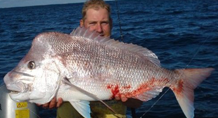
- Grows to over 20kg and up to 130cm
- Snapper are slow growing and can live for 40 years or more
- Not a true Snapper (Lutjanidae)
- Are members of the family Sparidae (sea breams)
- When spawning, Snapper can form schools consisting of thousands of individuals
- Females can produce millions of eggs during a spawning season
- Snapper develop bony humps on their foreheads in a process known as ‘hyperostosis‘
- In Japan, Snapper are a symbol of happiness and good fortune.



